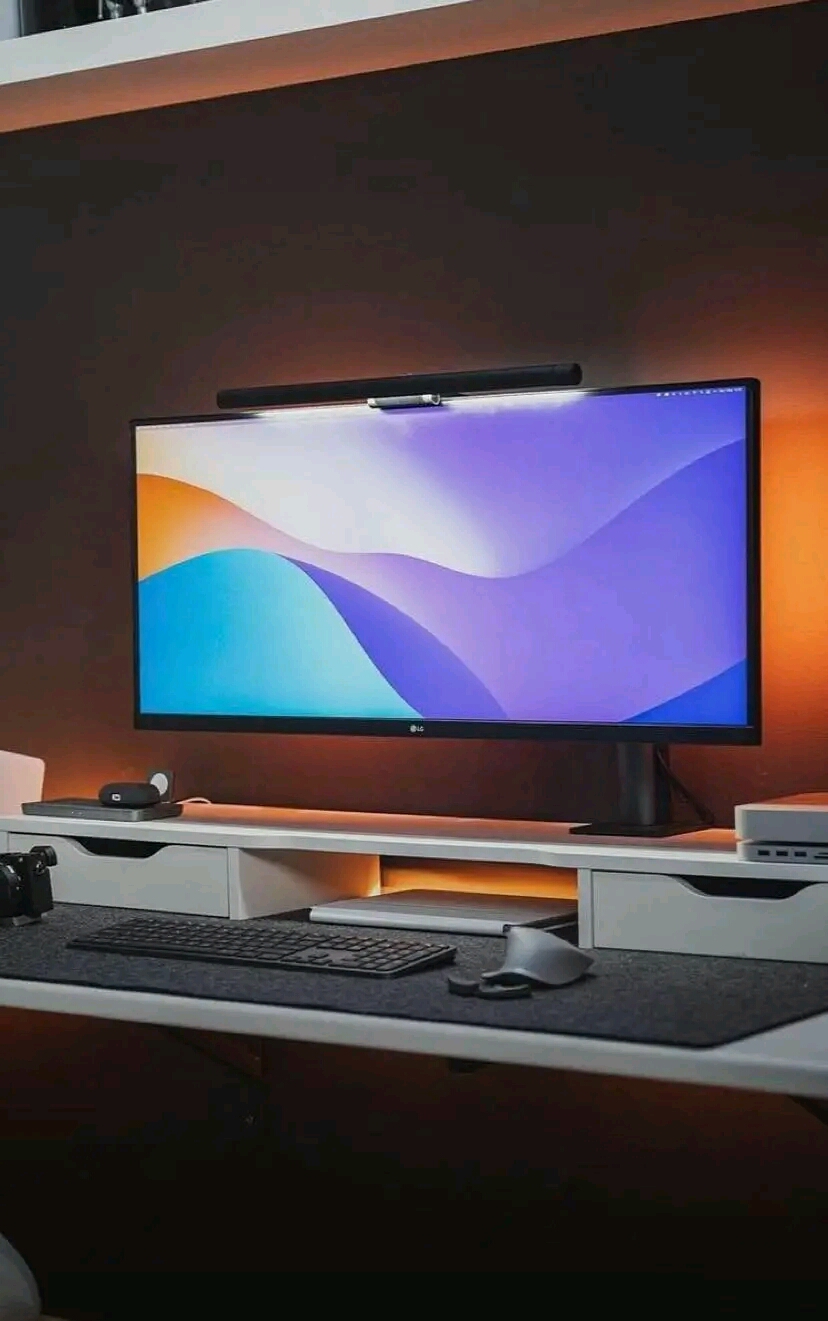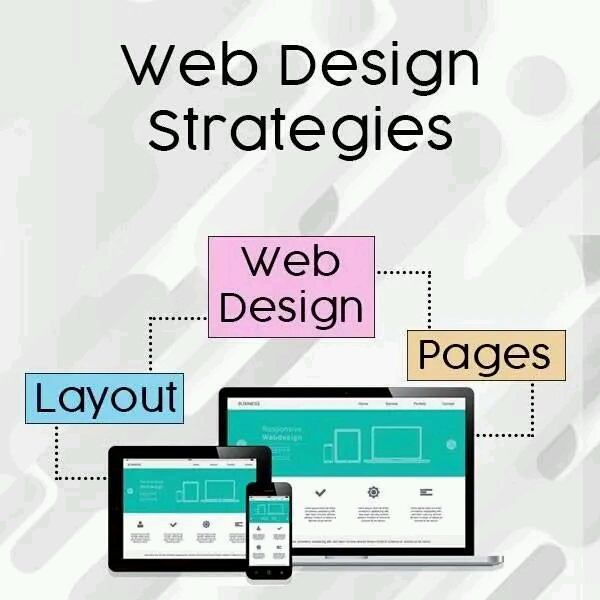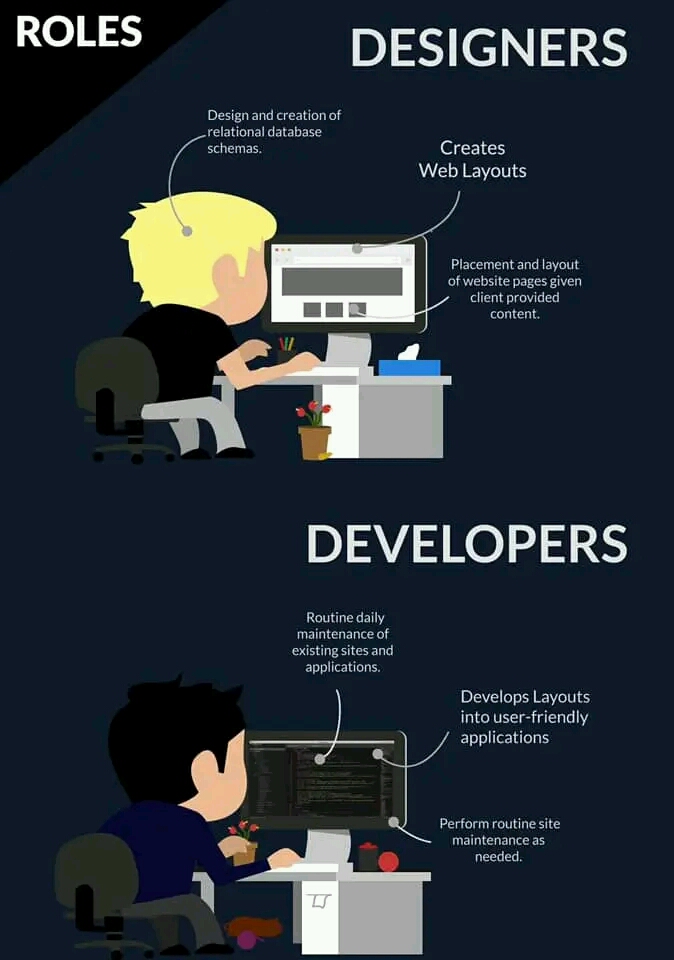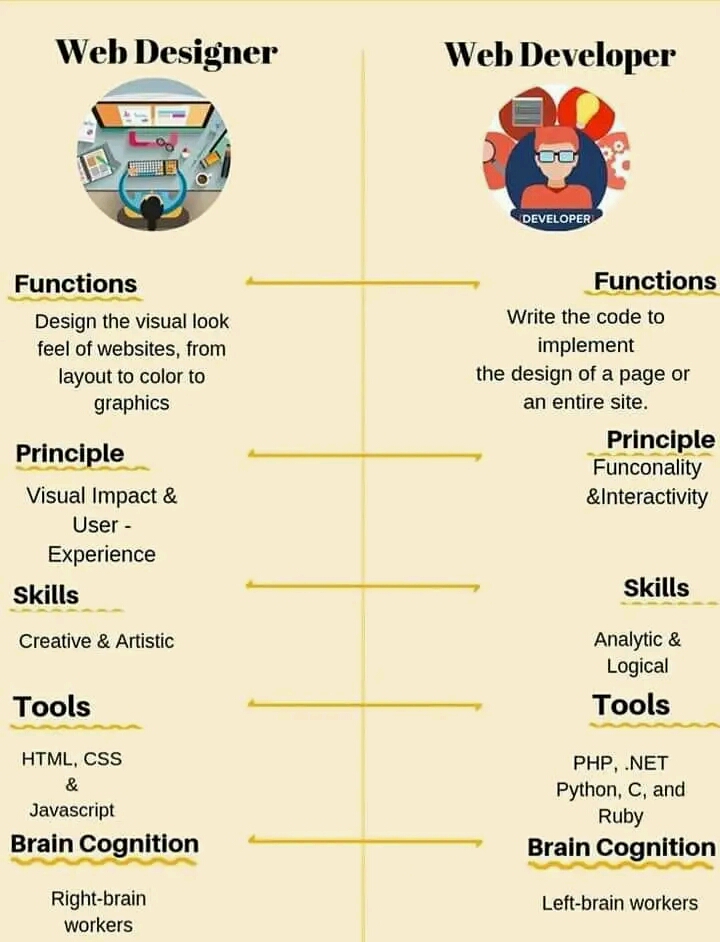Differences Between Web Designers And Web Developers

Differences Between Web Designers And Web Developers
Before going to Differences Between Web Designers And Web Developers, there are some terms to be discussed, most especially; Web Designing and Web Developing.
People often get confused between web development, web design, user interface, and user experience. Check out the below mentioned definitions to get a better idea between the difference between them.
Web Development — Web development refers to all the work done behind the scenes to make a website work effectively, load fast, and perform well overall.

Web Design — A broad umbrella category for all different disciplines and skills in the creation and maintenance of websites. Both UI and UX design, as well as other fields, are included under web design.
User Interface (UI) — User Interface design development refers to the process of improving user’s interaction with an app or website, making it as effective and robust as possible.
User Experience (UX) — User experience is the process of developing and improving the quality of experience of users when they visit an app or website. The UX of a website can either turn the website into a success or failure.
Web design vs. website development
The first step in our web design journey is to clarify the difference between web design and website development since the two are closely related and often (mistakenly) used interchangeably:
Web Design:
Web design refers to the visual design and experiential aspects of a particular website. We’re going to dive into more detail about web design throughout the rest of this article.
Web Development:
Website development refers to the building and maintenance of a website’s structure and involves intricate coding systems that ensure the website functions properly.
The following are the software languages most commonly used by web developers to build a website:
HTML or HyperText Markup Language is a coding language used to create the front end of websites. It is written to include the structure of a web page and carried out by web browsers on the websites that we see online.
CSS or Cascading Style Sheets is a programming design language that includes all relevant information relating to a web page’s display. CSS works with HTML to design the style and formatting of a website or page, including the layout, fonts, padding, and more.
CMS or a Content Management System is a computer software application that manages the digital content of a website.
Wix is an example of a CMS, which functions as a user-friendly system for website content development. This makes it possible for individuals to create a website and make updates without the knowledge of using code.
How to Learn Web Design (in 9 steps)
Becoming a web designer doesn’t have to be difficult. If you want to know the basic fundamentals, we’ve put together this guide that covers everything you need to know to get started.
Web design has so many different facets and it can be hard to know just where you should begin. We want to make things easier for you and we’ve put together a wealth of great information to help get you on your way to becoming a web designer.
We’ll explore these fundamental steps to learning web design:
1. Understand the key concepts of visual design
2. Know the basics of HTML
3. Understand CSS
4. Learn the foundation of UX design
5. Familiarize yourself with UI design
6. Understand the basics of creating layouts
7. Learn about typography
8. Put your knowledge into action and build something
9. Get a mentor

Website Development Strategies
There are a number of different website development strategies that can be used in order to create a successful website. The most important thing is to ensure that the website is easy to use and navigate, and that it contains relevant and up-to-date information.
One of the most important aspects of website development is search engine optimisation (SEO). This is the process of making sure that your website appears as high up as possible in search engine results pages (SERPs), in order to maximise the number of visitors to your site. This can be achieved through a number of different techniques, such as using relevant keywords and phrases, and providing quality content.
Another important aspect of website development is making sure that the site is responsive. This means that it should look good and be easy to use on all devices, including smartphones and tablets. This is becoming increasingly important as more and more people use mobile devices to access the internet.
Finally, it is also important to make sure that your website is secure. This means ensuring that all data is encrypted and that there are no security vulnerabilities. This is especially important if you are collecting any sensitive information from users, such as credit card details.

Differences Between Web Designers And Web Developers
Web Designers
Web designers focus on the appearance of your site. Their goal is to make it aesthetically pleasing while also user-friendly.
Web Designers construct your site’s layout, create conversion-generating elements, and ensure mobile responsivity for all of your pages.
They typically meet with clients before working on a site and discuss what type of site they want to create and what features they want to offer. Once this information is set, web designers create an interface and user experience that’s easy to follow and entertaining for the user.
To make sure their design is effective, web designers will conduct usability tests and will survey potential users for feedback. They’ll also stay up to date with the latest website trends and technologies to ensure their creating a modern and unique site experience.
When paired with a web developer, web designers are responsible for the look and feel of a site. Web developers, on the other hand, manage the site’s overall structure and functionality.
Types of Web Designers
It’s important to note that not all web designers perform the same tasks. Most have unique specializations that narrow their focus to just one or two aspects of your website’s design.
Here are three common types of web designers:
User Experience (UX) Designer: UX designers are responsible for making sure users have a delightful experience when interacting with your site. They create layouts and designs based on user feedback and data gathered on your target audience.
User Interface (UI) Designer: UI designers focus on individual interactions that users have with your site. They assess various elements on your web pages and determine how users will perceive them when navigating through content. While UX designers make more data-driven decisions, UI designers are more concerned with the overall look and feel of your site.
Visual Designer: Visual designers work on both the user interface as well as the user experience. They make sure your site has the right balance between aesthetically pleasing features and easy-to-use functionality. They also solve design problems and make sure the website positions the brand in the right way.
Depending on where your website is in the design process, you may need to hire one, two, or all three of these roles to make sure its design is attractive and user-friendly.
Web Developers
Web developers build websites from the ground up. Their job involves a lot of technical work and experience with complex coding techniques and advanced programming languages.
Unlike a web designer who’s primarily responsible for look and feel, web developers are responsible for execution. Web designers come up with interesting and creative features for your site, but web developers bring those features to life. This includes coding and configuring frontend, user-facing features as well as backend servers and databases that support the frontend.
Once the site is launched, the work for the developer doesn’t end. They conduct post-launch tests and provide ongoing support for websites after they go live. This includes regular site maintenance as well as correcting any bugs that might have been overlooked during the development process.
Types of Web Developers
Similar to web designers, web developers will also typically have a specialization or a focus. Here are the most common types.
Backend Developer: Backend developers work on all of the functions that occur behind the scenes on your website. This includes coding databases, server frameworks, and advanced programming languages like PHP, Java, and Ruby. Their job is to ensure the site functions properly and continues to work over time.
Frontend Developer: Frontend developers code everything that the user sees when interacting with a site. They use HTML, CSS, Javascript, and other coding languages to create the visual elements that appear on your pages. A lot of their work overlaps with the design team and they’ll often collaborate with designers when building different features or elements on a site.
Full-Stack Developer: A full-stack developer can pretty much do it all. They can work on both the frontend and the backend of your site — depending on where they’re needed. They’re effectively a jack-of-all-trades web developer.
If you’re trying to build a massive website, or if you have a big enough budget, you might want to hire both a frontend developer and a backend one. However, in some cases, a full-stack developer may be all that you need to create an effective website.

In summary, Differences Between Web Designers And Web Developers
A web designer:
Focuses on look and feel of a websiteUses HTML, CSS, and JavaScript
Is competent in color scheming, graphic design, and information flow
Creates a great user experience
Is right-brained: Strong intuition, creativity, & imagination
Portfolio is worth more than a degree
Average annual salary: $61,178A
Web developer:
Creates the inner workings of a website
Is competent in programming languages (PHP, .NET, Python, C, Ruby)
Develops the user interface
Is left-brained: logic, linear thinking, technical
SEE ALSO : Types of Websites And Elements of Effective Websites
Hands-on coding experience is required (either your own products or GitHub)
Average annual salary: $91,438
Comments are closed.